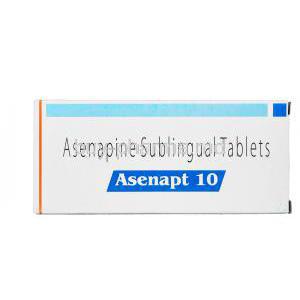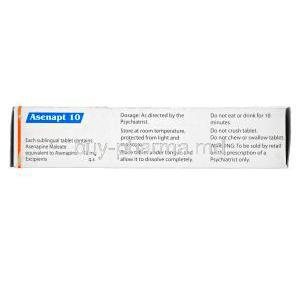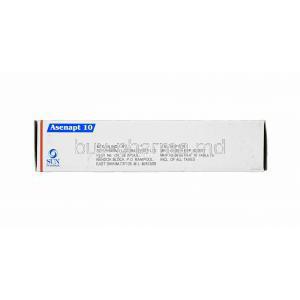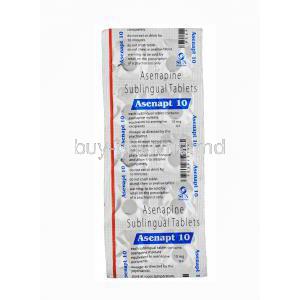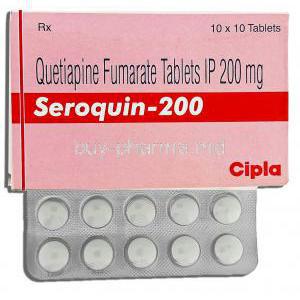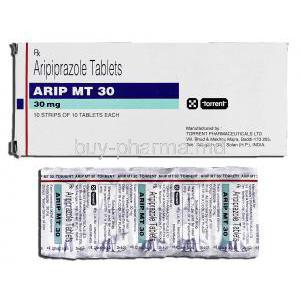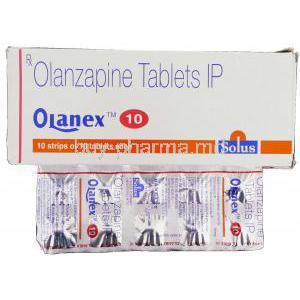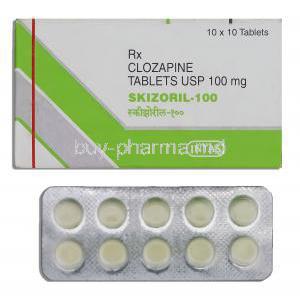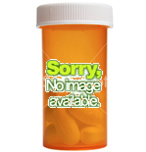Introduction to Asenapine Maleate
Overview of Asenapine Maleate
Asenapine Maleate is a second-generation, atypical antipsychotic medication indicated primarily for the management of psychiatric conditions such as schizophrenia and bipolar I disorder. It exerts its therapeutic effects by modulating neurotransmitter activity in the brain, helping stabilize mood and reduce psychotic symptoms.
Therapeutic Class and Pharmacological Profile
Classified as an atypical antipsychotic, Asenapine belongs to the broader pharmacological group of serotonin-dopamine antagonists. It is distinct in its sublingual and transdermal formulations, which bypass first-pass metabolism and enable rapid central nervous system absorption.
Brand Names and Global Availability
Marketed under several brand names such as Saphris and Sycrest, Asenapine Maleate is approved in various countries including the United States, Canada, the European Union, and parts of Asia. Availability may differ depending on regulatory approvals and local distribution channels.
Composition and Formulation
Active Ingredient: Asenapine Maleate
The primary active pharmaceutical ingredient is Asenapine Maleate, a tricyclic compound with high receptor binding affinity that is critical for its antipsychotic efficacy.
Available Dosage Forms
- Sublingual tablets: 5 mg and 10 mg - Transdermal patches: typically available in extended-release forms These unique delivery systems provide alternate options for patients with difficulties swallowing or adhering to oral medications.
Inactive Ingredients and Excipients
Common excipients include gelatin, mannitol, citric acid monohydrate, and magnesium stearate. The sublingual formulation avoids gastrointestinal degradation, enhancing systemic bioavailability.
Variants by Manufacturer or Country
Different manufacturers may offer slight variations in excipient content or delivery systems. Brand names and packaging also vary by country based on licensing agreements and health authority regulations.
Mechanism of Action: How Asenapine Maleate Works
Receptor Binding Profile
Asenapine acts as an antagonist at multiple receptor sites including: - Dopamine D2 - Serotonin 5-HT2A and 5-HT1A - Alpha-adrenergic and histaminergic receptors Its high binding affinity across these sites contributes to its robust antipsychotic and mood-stabilizing effects.
Central Nervous System Modulation
By modulating dopamine and serotonin neurotransmission, Asenapine helps correct the chemical imbalances associated with hallucinations, delusions, mania, and mood dysregulation. It minimizes positive and negative symptoms of psychosis without significant sedation or cognitive impairment.
Comparison with Other Atypical Antipsychotics
Compared to olanzapine, risperidone, and quetiapine: - Lower risk of weight gain - Fewer extrapyramidal symptoms - Faster onset via sublingual delivery
Approved Medical Uses of Asenapine Maleate
Treatment of Schizophrenia in Adults
Asenapine is indicated for the acute and maintenance treatment of schizophrenia in adults, targeting both positive (hallucinations, delusions) and negative (social withdrawal, anhedonia) symptoms.
Bipolar I Disorder (Acute Manic or Mixed Episodes)
The medication is approved for monotherapy or adjunctive therapy in adults experiencing manic or mixed episodes associated with bipolar I disorder. It helps reduce agitation, impulsivity, and mood swings.
Maintenance Therapy for Bipolar Disorder
For long-term use, Asenapine has shown efficacy in preventing relapse of mood episodes in stabilized bipolar patients.
Combination Therapy with Mood Stabilizers
Asenapine may be used alongside lithium or valproate for more robust control of bipolar symptoms, particularly in refractory cases.
Off-Label Uses of Asenapine Maleate
Major Depressive Disorder (Adjunctive Therapy)
In treatment-resistant depression, Asenapine is sometimes used in conjunction with SSRIs or SNRIs to enhance antidepressant response.
Treatment-Resistant Anxiety Disorders
Low-dose Asenapine may reduce symptoms of generalized anxiety disorder and social phobia when conventional therapies fail.
Borderline Personality Disorder Symptom Management
Although not approved for personality disorders, some clinicians utilize Asenapine off-label to help regulate mood lability, impulsivity, and aggression.
Post-Traumatic Stress Disorder (PTSD)
In PTSD, Asenapine may help alleviate intrusive thoughts, hypervigilance, and mood instability.
Delusional Disorder and Other Psychotic Spectrum Conditions
Its broad receptor profile allows use in rare psychotic syndromes where other antipsychotics are ineffective or poorly tolerated.
Dosage and Administration Guidelines
Standard Adult Dosage for Schizophrenia
- Initial dose: 5 mg sublingually twice daily - Maintenance dose: 5–10 mg twice daily depending on clinical response
Recommended Dosage for Bipolar I Disorder
- Starting dose: 10 mg sublingually twice daily - Titration based on symptom control and tolerability
Titration Schedule and Dose Adjustment
Gradual titration is advised to monitor side effects. Dose increases should not exceed 5 mg increments within 3 days.
Administration Technique for Sublingual Tablets
- Place the tablet under the tongue and allow it to fully dissolve - Avoid swallowing, chewing, or drinking liquids for 10 minutes post-dose
Missed Dose Instructions
If a dose is missed, it should be taken as soon as remembered unless it's close to the time of the next dose. Double dosing is discouraged.
Special Dosage Considerations in Specific Populations
Dosage Modification in Hepatic Impairment
Use is contraindicated in severe hepatic impairment (Child-Pugh C). Dose adjustments are recommended in moderate liver dysfunction.
Dosage Adjustment in Renal Insufficiency
While no dose adjustment is required for mild to moderate renal impairment, caution is advised in patients with creatinine clearance below 30 mL/min.
Recommendations for Switching from Other Antipsychotics
A gradual cross-titration strategy is recommended to prevent relapse or withdrawal effects. Monitor for additive side effects during the transition period.
Common and Serious Side Effects of Asenapine Maleate
Most Frequently Reported Side Effects
- Somnolence - Dizziness - Oral hypoesthesia (numbness or tingling in the mouth) - Weight gain
Metabolic Changes
Long-term use may lead to: - Elevated fasting glucose - Dyslipidemia - Mild weight gain compared to other antipsychotics
Neurological and Extrapyramidal Symptoms
- Akathisia - Parkinsonism - Tardive dyskinesia (rare)
Rare but Serious Side Effects
- Neuroleptic malignant syndrome - QT interval prolongation and torsades de pointes - Hepatotoxicity - Seizures
Monitoring Recommendations for Adverse Effects
- Periodic ECGs, especially in those with cardiac risk - Weight, lipid panel, fasting glucose - Neurological assessment for motor symptoms
Drug Interactions and Contraindications
Known Interactions with CNS Depressants and CYP1A2 Modulators
Caution is advised when co-administered with: - Benzodiazepines - Alcohol - Fluvoxamine (CYP1A2 inhibitor) - Carbamazepine (CYP1A2 inducer)
Interaction with Other Antipsychotics, Antidepressants, Antihypertensives
Concurrent use may increase risk of hypotension, CNS depression, or serotonin syndrome. Monitor blood pressure and mental status regularly.
Contraindications
- Severe hepatic impairment - Known hypersensitivity to Asenapine or formulation components (e.g., anaphylaxis, angioedema)
Warnings and Important Precautions
Black Box Warning: Increased Mortality in Elderly with Dementia-Related Psychosis
Asenapine carries a black box warning due to evidence of increased mortality in elderly patients with dementia-related psychosis. Clinical studies have shown a heightened risk of cerebrovascular events such as stroke and transient ischemic attacks, often leading to fatal outcomes. The drug is not approved for use in this population and should be avoided unless absolutely necessary.
Suicidal Thoughts and Behaviors in Young Adults
Like many psychotropic agents, Asenapine may elevate the risk of suicidal ideation and behaviors in young adults, particularly during the initial weeks of treatment or during dose adjustments. Close monitoring is advised, especially in patients under the age of 25 with a history of depression or suicidal behavior.
Risk of Orthostatic Hypotension and Syncope
Asenapine can cause orthostatic hypotension due to alpha-adrenergic receptor antagonism, resulting in dizziness, lightheadedness, or fainting, especially during the early phase of treatment. Elderly individuals and those on antihypertensive agents are particularly vulnerable. Gradual dose titration and patient education regarding posture changes are essential.
QT Interval Prolongation and Cardiac Risk Assessment
This medication has been associated with QT interval prolongation on electrocardiograms. While rare, this effect may predispose patients to torsades de pointes and sudden cardiac arrest. A baseline and periodic ECG is recommended for those with known cardiac history, electrolyte imbalances, or when used concurrently with other QT-prolonging agents.
Risk of Leukopenia, Neutropenia, and Agranulocytosis
Though infrequent, Asenapine may suppress bone marrow function, resulting in leukopenia, neutropenia, or potentially life-threatening agranulocytosis. Complete blood counts (CBC) should be periodically monitored, particularly in patients with a prior history of blood dyscrasias or those on concomitant hematotoxic medications.
Guidelines for Careful Administration
Monitoring Parameters: Weight, Lipids, Glucose, Blood Pressure, ECG
- **Weight gain**: Monitor baseline and ongoing weight due to metabolic risks. - **Lipids and glucose**: Periodic assessment of fasting glucose and lipid profile is recommended to detect early metabolic syndrome. - **Blood pressure**: Regular monitoring helps mitigate risks of orthostatic hypotension. - **ECG**: Baseline and periodic assessments are advisable in at-risk individuals.
Avoidance of Eating or Drinking for 10 Minutes After Administration
Patients should avoid consuming food or beverages for at least 10 minutes after taking the sublingual formulation. This restriction ensures optimal mucosal absorption and prevents diminished bioavailability due to early swallowing.
Monitoring for Signs of Oral Irritation or Ulceration
Sublingual tablets may cause local oral side effects including numbness, tingling, and irritation. Patients should be encouraged to report persistent discomfort, ulceration, or mucosal changes to their healthcare provider.
Caution in Patients with Seizure Disorders
Asenapine may lower the seizure threshold. Caution is warranted in patients with a known seizure disorder or conditions that may predispose to seizures, such as brain trauma, alcohol withdrawal, or concurrent use of other pro-convulsant drugs.
Use in Special Populations
Administration in Elderly Patients
Increased Sensitivity and Side Effect Profile
Older adults may exhibit increased pharmacodynamic sensitivity to Asenapine, resulting in amplified side effects such as sedation, orthostatic hypotension, and extrapyramidal symptoms.
Risk of Falls and Orthostatic Hypotension
Due to the risk of postural dizziness, elderly patients are at higher risk of falls and related complications. Preventive measures, such as gradual dose initiation and fall-risk assessment, should be incorporated into the care plan.
Cognitive Impairment and Monitoring Considerations
The use of Asenapine in elderly individuals with cognitive decline should be approached cautiously. Periodic assessments of memory, executive function, and overall cognition are advisable.
Use During Pregnancy and Breastfeeding
FDA Pregnancy Category and Known Reproductive Toxicity
Asenapine is classified under FDA Pregnancy Category C. Animal studies have shown potential reproductive toxicity, though human data is limited. The medication should only be used during pregnancy if the potential benefit justifies the potential risk to the fetus.
Risks During Pregnancy vs. Benefits for Psychiatric Stability
Uncontrolled psychiatric illness during pregnancy carries inherent risks such as poor prenatal care, substance use, and suicidality. The decision to use Asenapine should weigh maternal mental health needs against potential fetal risks.
Breast Milk Transfer and Infant Safety Data
Limited data suggest Asenapine may be excreted in human breast milk. The effects on nursing infants are unknown. Breastfeeding should be discontinued or the drug should be avoided depending on the clinical importance of the medication to the mother.
Pediatric Use and Administration in Children
Indications for Use in Adolescents with Bipolar Disorder
Asenapine is approved in some regions for the treatment of manic or mixed episodes associated with bipolar I disorder in adolescents aged 10–17 years. Efficacy has been demonstrated in short-term clinical trials.
Safety and Efficacy Data in Children Under 10
Safety and effectiveness in pediatric patients under 10 years of age have not been established. Off-label use in this age group is not recommended due to insufficient data.
Behavioral and Developmental Monitoring
Pediatric patients receiving Asenapine should be closely monitored for changes in growth, weight, metabolic profile, and behavior. Neurodevelopmental assessments are advised during prolonged therapy.
Overdose and Emergency Management
Symptoms of Overdose
Clinical manifestations of overdose may include: - Sedation or somnolence - Hypotension - Extrapyramidal symptoms (rigidity, tremors) - Respiratory depression - QT prolongation and arrhythmias in rare cases
Immediate Interventions and Supportive Care
- Ensure airway patency and cardiovascular support - Administer activated charcoal if within one hour of ingestion - Monitor vital signs and ECG - Intravenous fluids for hypotension
Poison Control and Emergency Protocols
Contact local poison control centers immediately. Patients should be monitored in a clinical setting until all vital signs and neurological status stabilize. There is no specific antidote for Asenapine overdose.
Handling and Storage Instructions
Recommended Storage Temperature and Humidity
Asenapine should be stored at controlled room temperature, typically between 20°C to 25°C (68°F to 77°F). Avoid exposure to excessive moisture or high humidity.
Protection from Moisture and Light
Keep the medication in its original packaging to prevent degradation from moisture and light. Do not remove tablets from the blister until ready for use.
Safe Handling Practices for Healthcare Providers
Healthcare professionals should wear gloves when handling transdermal systems or broken tablets to avoid unintentional dermal exposure. Follow local institutional protocols for antipsychotic medication management.
Disposal of Unused or Expired Medication
Unused or expired Asenapine should be disposed of through a medication take-back program or in accordance with local pharmaceutical waste guidelines. Do not flush or dispose of in household trash unless instructed.
Asenapine Maleate FAQ
- What is asenapine maleate used for?
- Is asenapine for anxiety?
- How is asenapine different from other antipsychotics?
- How does asenapine make you feel?
- What does asenapine do to the brain?
- Is asenapine FDA approved?
- When to take asenapine?
- Is asenapine a mood stabilizer?
- Can asenapine cause weight gain?
- Can you take asenapine once a day?
- What happens to your brain when you take antipsychotics?
- Does asenapine make you sleepy?
- Can you drink alcohol on asenapine?
- Is asenapine expensive?
- Is asenapine a sedative?
- How do you take asenapine?
- Is asenapine the same as lurasidone?
- How quickly does asenapine work?
- Is asenapine good for anxiety?
- Is asenapine a strong antipsychotic?
- Is asenapine sedating?
- Should asenapine be taken morning or night?
What is asenapine maleate used for?
Asenapine is a drug that affects the brain and is used to treat schizophrenia. It's part of a class of medications called second-generation antipsychotics. The way it works is pretty straightforward; asenapine helps get two chemicals in the brain, dopamine and serotonin, back in balance. This can really make a difference for people with schizophrenia, improving their thought process, mood, and behavior.
Is asenapine for anxiety?
Asenapine is worth considering for people with anxiety. Its shown promise in reducing anxiety without the risks that come with benzodiazepines. This makes it a viable option for treating psychosis, especially when anxiety is a factor.
How is asenapine different from other antipsychotics?
It exhibits little muscarinic receptor antagonist effects
How does asenapine make you feel?
- Restlessness
- Numbness
- Drowsiness
- Dizziness
What does asenapine do to the brain?
It balances two hormones in your brain, dopamine and serotonin. These hormones help regulate mood and behavior.
Is asenapine FDA approved?
Yes
When to take asenapine?
Morning and evening
Is asenapine a mood stabilizer?
Yes
Can asenapine cause weight gain?
Yes
Can you take asenapine once a day?
No
What happens to your brain when you take antipsychotics?
Antipsychotic meds work by interfering with dopamine receptors in the brain. It slows down the flow of messages. This can be a help in reducing psychotic symptoms.
Does asenapine make you sleepy?
Yes
Can you drink alcohol on asenapine?
No
Is asenapine expensive?
Yes
Is asenapine a sedative?
It can cause mild sedation.
How do you take asenapine?
It is taken twice a day.
Is asenapine the same as lurasidone?
Lurasidone is taken once a day, while Asenapine is taken twice.
How quickly does asenapine work?
It usually takes three weeks for bipolar I disorder to start showing some progress, but for schizophrenia, it takes 6 weeks.
Is asenapine good for anxiety?
Yes
Is asenapine a strong antipsychotic?
Yes
Is asenapine sedating?
Yes
Should asenapine be taken morning or night?
Both


